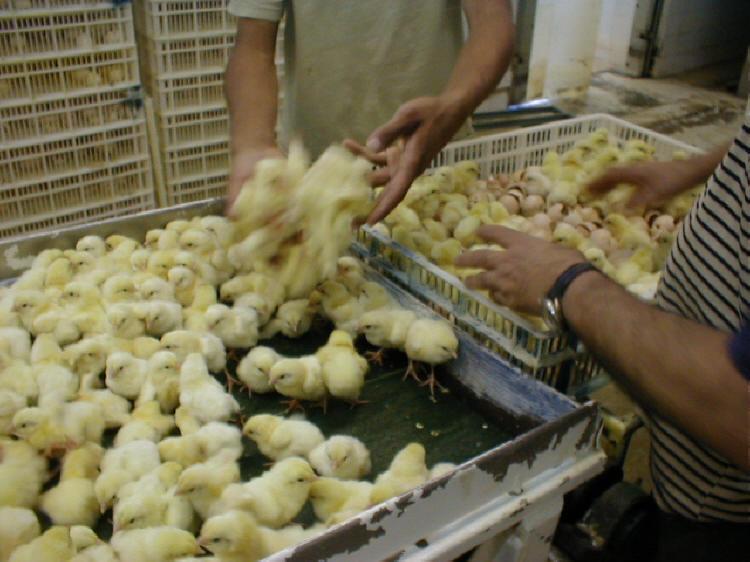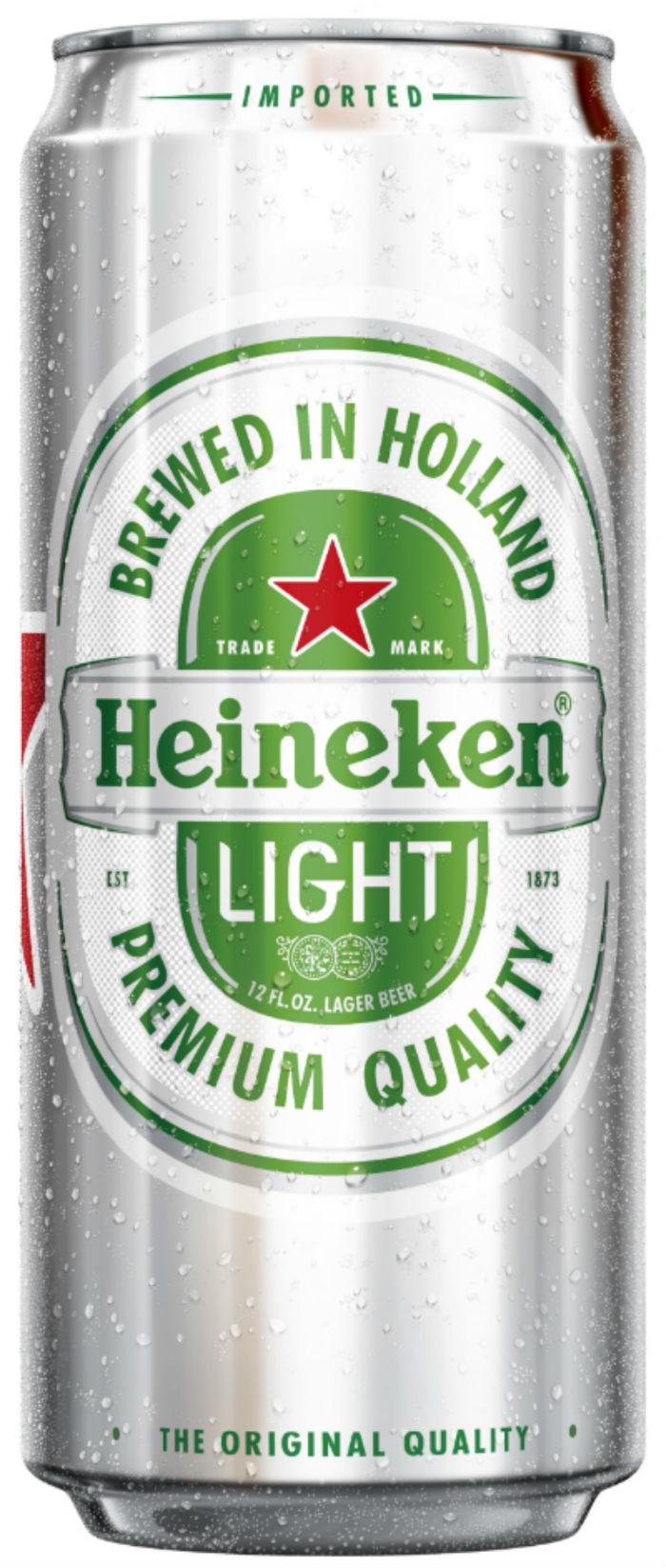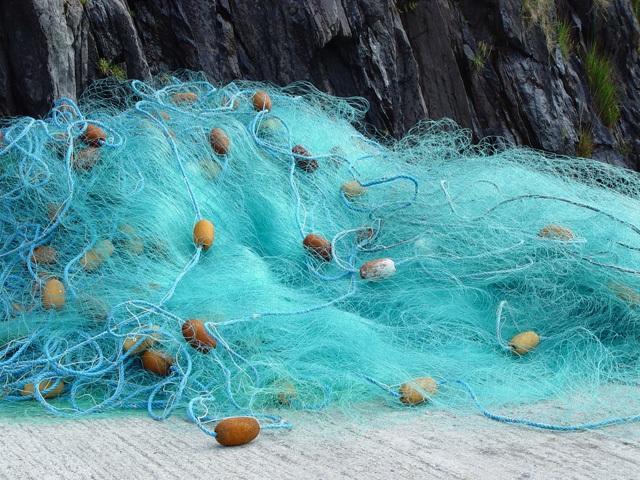Unilever Pledges to Stop Killing Male Chicks


Egg-laying hens are bred for a single trait: laying eggs. Breeders select the most productive hens, which result in greater egg production. Unfortunately, male chicks are not productive, either for laying eggs or producing meat (compared to a chicken bred for meat).
“Somewhere along the way the male chick became disposable," says Janice Neitzel, principal of Sustainable Solutions Group. "The chicks are thrown in to the high-speed grinder and if all goes as planned, killed instantaneously. But it isn’t pretty. Consumers may not be currently aware of this global practice, but with social media -- it is just a matter of time. “
This may change, as Unilever recently announced that it pledges to find a solution to this industry-wide practice, which kills millions of male chicks annually. Unilever will fund research to seek alternatives, such as technologies that allow egg hatcheries to determine the gender of embryos before maturing into chicks.
"We are committed to providing financial support to research and market introduction of in-ovo gender identification (sexing) of eggs, a new technology that has the potential to eliminate the hatching and culling of male chicks in the poultry-breeding industry," Unilever announced in a press release. If successful, this initiative could spare millions of male chickens each year, and it would offer a solution for a major area of concern for animal welfare activists. It is an example of a strong corporate citizenship initiative, where a company is working to solve a problem that could have global implications for the industry. As the third largest consumer goods company in the world, this initiative is part of a goal to source 100 percent of its agricultural raw materials sustainably by 2020. Unilever is working to make the farming industry more humane, while bringing various stakeholders together: egg producers, research and development companies, and the animal welfare community.
"We are arranging meetings with animal-welfare experts, egg industry organizations, suppliers and other stakeholders to develop a multi-stakeholder dialogue and tangible steps to address this important issue and explore alternative options," Unilever announced in its press release.
The male chick initiative adds to recent achievements and commitments by Unilever for more humanely-sourced products. Unilever has a commitment to use exclusively cage-free eggs (also known as non-battery caged) in its products, including mayonnaise, mustard, dressing, ice cream and sauce. Half of the eggs in Unilever’s North America supply are certified by the American Humane Association or Humane Farm Animal Care. This ensures that laying hens are not put in battery cages, where the hen's muscles and bones often deteriorate from lack of space and movement.
“Our mission to use 100 percent cage-free eggs by 2020 is in full swing,” says Deenya Rabius, Category Mix Marketing Director at Unilever Food Solutions. “We already source cage-free eggs for many of our products, and are continuing to expand use as supply grows.”
Sourcing such large quantities of cage-free eggs is not a small feat. Using cage-free eggs for Hellmann's Light Mayonnaise requires an estimated 3.5 million pounds of eggs from 125,000 hens for 30 million jars of mayonnaise.
Sourcing higher welfare ingredients is a smart move for Unilever to protect its brand. “As viral videos bring light to standard agricultural practices, retailers and restaurant chains need to prioritize understanding the supply chain animal welfare practices as consumer knowledge is rising exponentially,” says Neitzel.
Image credit: Animal Friends Croatia (upper photo) and Flickr/Opacity (lower photo)
Sarah Lozanova is a regular contributor to environmental and energy publications and websites, including Mother Earth Living, Green Building & Design, Triple Pundit, Urban Farm, and Solar Today. Her experience includes work with small-scale solar energy installations and utility-scale wind farms. She earned an MBA in sustainable management from the Presidio Graduate School and she resides in Belfast Cohousing & Ecovillage in Mid-coast Maine with her husband and two children.
Heineken USA Takes Sustainability Seriously


It’s not a small thing for a company with almost 500 employees, eight offices, over 20 beers and ciders in its portfolio, and almost $4 billion in direct economic impact on the country to strive for sustainability. The company in question is Heineken USA, and its New York City office reduced water use by 20 percent and electricity use per square foot to 25 percent below what is required by local codes. Its parent company Heineken has reduced water use by its breweries around the world per unit of finished product by 5 percent in 2013. Heineken has also reduced carbon emissions by 26 percent.
Heineken’s global sustainability program, Brewing a Better Future, has four key areas of focus: advocating responsible consumption, reducing carbon dioxide emissions, conserving water resources and sourcing sustainably. To encourage responsible consumption among its employees, Heineken began a pilot program in 2013 that provided a few of its employees with Alcohoot, which connects to a smartphone and tells users how much alcohol they have consumed. It also links to the GPS in smartphones and can link to taxi apps so employees can find a safe way home. The device is now given to all of the company’s employees. In 2013, Heineken USA increased the amount of free rides offered to employees through its Safe Ride programs by 122 percent.
Heineken also advocates responsible consumption through marketing campaigns. In 2011, Heineken launched the global campaign Sunrise and through it reached over 3 million people. A year later, Heineken’s responsible consumption message was on almost 8 billion Heineken branded bottles and cans.
Partnerships are also part of its strategy to encourage responsible consumption. Heineken partners with organizations and businesses in 33 markets to find new ways of encouraging responsible consumption. The company collaborates with governments on 'don’t drink and drive' campaigns. In addition, Heineken collaborates with leaders in the drinks industry in five areas: underage drinking, marketing codes of practice, consumers information and production innovation, drunk-driving and retailer support.
Reducing carbon dioxide emissions
Heineken USA reduced its carbon footprint in distribution by 1.7 percent since 2011, and employee-car emissions decreased by 6 percent in 2013. The company acknowledges that the reduction is not as much as it “hoped for,” so it is focusing its efforts on achieving a greater reduction. The company has lofty carbon reduction goals for other areas. Heineken plans on reducing carbon emissions in production by 40 percent, in its refrigerators by 50 percent and in its distribution chain in the U.S. and Europe by 20 percent.
Conserving water resources
Heineken USA wants to reduce water use in the breweries that supply its imported beers and ciders by 25 percent. Heineken has achieved a 5 percent reduction per gallon of finished product in its Dutch breweries and has reduced total water use by 20 percent. A 20 percent reduction equals the water needs of 1,700, two-person households for an entire year.
Sourcing sustainably
Heineken USA relies on Heineken to supply its beers and ciders and Heineken relies on various suppliers. Heineken’s goal is to source at least 50 percent of its raw materials from sustainable sources while delivering 60 percent of agricultural raw materials in Africa through local sourcing . Heineken also wants suppliers to comply with its Supplier Code Procedures. By the end of 2013, 100 percent of applicable Heineken USA suppliers were in full compliance with its supplier code guidelines.
Image credit: Heineken
SOCAP14 Interview: Thaddeus Owen, Herman Miller


This video is part of our ongoing coverage of SOCAP14. To see the rest please visit our SOCAP 14 page here.
In this video, Herman Miller's chief engineer on the sustainability team, Thaddeus Owen talks about what sustainability means at the company. Specifically he discusses the concept of radical transparency across the company's supply chain as well as with regards to the chemicals and other ingredients that go into Herman Miller's products.
A Young Filmmaker’s Journey to Change the World

Editor’s Note: This article originally appeared in “The Millennials Perspective” issue of Green Money Journal.
By Holly Mosher
In 2006 I started off on two different film journeys. One was to make a film on world visionary Muhammad Yunus and his amazing creation of microcredit and social business that was selflessly helping millions of people and closing the economic gap in Bangladesh; the other was to follow the path of political corruption through the selfish influence of corporate money in the United States. The irony of working on two films, one following the influence of less than $100 on people’s lives versus the other showing the influence of over $10 billion spent in the last election cycle, was not lost on me.
Bonsai People – The Vision of Muhammad Yunus shows how social business can create a more just society and give people a chance to lift themselves out of poverty, while Pay 2 Play: Democracy’s High Stakes, highlights how -- just as in the game of Monopoly -- American politics has become winner-take-all, morphing our country into an oligarchy (as was confirmed by the recent Gilens and Page study that came out of Princeton and Northwestern).
While making Bonsai People I learned much about the field of social enterprise and how it can change lives, altering the balance of wealth in society for the better. In Pay 2 Play, I witnessed my own country being destroyed by a relatively few wealthy people willing to spend their millions (chump change for those who are worth billions) to influence elections across the country, supporting politicians who owe them legislative favors once they are in office, making it difficult for Congress to pass any bills that are good for WE THE PEOPLE.
In Pay 2 Play we began by following the story of Coingate in Ohio, where fundraiser and activist Tom Noe was using public funds from the Bureau of Workers Compensation and investing it in rare coins, LeBron James jerseys and Beanie Babies, while peddling political interest for his own and his party’s gain. Noe was later convicted for his crimes, but all too often the corruption continues unchecked, as corporations use their get-out-of-jail-free cards, usually paying small fees compared to the large amounts they’ve “earned” taking advantage of others while breaking the law.
Little did we know when we started filming Pay 2 Play, that four years later the Supreme Court would open the floodgates of spending for political influence with its egregious Citizens United v. FEC decision allowing unlimited amounts of corporate spending in elections. And this year we saw the Supreme Court lifting certain limits on individual spending in the McCutcheon v. FEC decision, allowing individual donors up to $5.9 million per election cycle and even more incredulously allowing closely held corporations religious freedoms in the Burwell v. Hobby Lobby decision. The power of the Supreme Court to drastically change the balance of corporate power has, as of yet, gone unchecked.
People were willing to take to the streets to voice their concerns (seen by the numbers that came out in Occupy Movements around the globe) because they see how these decisions and corporate influence are destroying our democracy. MoveOn did a survey of their members in January 2014 and found that getting money out of politics was the biggest concern of their millions of members, and OurTime.org found that their members aged 18-35 said getting money out of politics was their second biggest concern.
WE THE PEOPLE understand the need to get big money out of politics if we are going to get any of the other reforms or protections passed in this country. Whether people care about sensible gun safety laws, the environment, the problems of mass incarceration, etc., corporate lobbyists are blocking real change by controlling the way their politicians vote. Further, there are many good people in office who have been corrupted by the broken system that rewards and encourages bigger donations every year.
Read Holly's complete article here.
Holly Mosher is an award-winning filmmaker who brings socially conscious films to the public. After graduating with honors from New York University’s Tisch School of the Arts, Holly produced a number of commercials and feature films. In 2004 she made her directorial debut with her award-winning documentary, Hummingbird, about two nonprofits in Brazil that work with street kids and women suffering domestic violence.
Afterwards, Holly produced two films on the pharmaceutical industry: Side Effects, starring Katherine Heigl, and Money Talks: Profits Before Patient Safety. She co-produced Maybe Baby, and executive produced Vanishing of the Bees, FREE FOR ALL!, and the new Pay 2 Play: Democracy’s High Stakes.
The second film she directed, Bonsai People – The Vision of Muhammad Yunus, is currently airing on American Public Television. The Hollywood Reporter named her one of the top up-and-coming independent film producers.
No change at the top as Unilever leads supply chain league


The top three companies in this year’s Gartner European supply chain ranking are unchanged from 2013. PG Tips maker Unilever comes in at no1, followed by Inditex (the Spanish fashion retail group) and Sweden's fashion chain, H&M, at no3.
Every year IT and advisory research company Gartner identifies the top 15 performers (headquartered in Europe), based on a combination of financial metrics (revenue growth, return on assets and inventory), and the opinion of peers and Gartner supply chain analysts.
Technology company Seagate made its debut at no4. The Irish-registered manufacturer of storage devices also ranked twentieth in the global top 25. Gartner says the company showcased an impressive array of operational excellence and customer connection programs, and a return on assets that is second only to Apple on the high-tech list.
There were also three new entries: Ahold, Delphi Automotive and Reckitt Benckiser.
You can access the complete listing here.
EAC calls for creation of 'Office for Environmental Responsibility'


The UK government has been given a ‘red card’ for its efforts to reduce health-damaging air pollution, protect biodiversity and prevent flooding in a scorecard assessment of its green policies during this Parliament produced by the Environmental Audit Committee (EAC).
The report comes as the main political parties prepare for their manifesto-setting party conferences. The Committee calls for the creation of new legal commitments to protect the environment, to be overseen by a new 'Office for Environmental Responsibility' to ensure all Government policies are compatible with those commitments.
On air pollution the report finds that emissions of a number of airborne pollutants increased in 2013, after being steady between 2010 and 2012 and in a longer term decline before that. While on biodiversity, the latest Sustainable Development Indicators show a deterioration in the counts for three out of four types of bird populations, used as a litmus test for the SDI's ‘UK wildlife' indicator. Invasive species, which harm native biodiversity, are becoming more prevalent.
And with regards to flooding and coastal protection, the report points out that while the Environment Agency and local defences protected properties in approximately 1.3m instances, 2.4m properties are still at risk of flooding from rivers or the sea, and 3m from surface water.
Chair of the committee, Joan Walley MP, said: “Our inquiry provides a wide ranging examination of the state of the environment and shows that further and continued effort is required to protect it properly. A dedicated, wide-ranging ‘Environmental Strategy’ is needed, overseen by a new ‘Office for Environmental Responsibility’ to ensure the Government meets the requirements to protect human health and the natural world.”
Picture credit: © Mrallen | Dreamstime.com - York Floods - Sept.2012 - UK Photo
3p Weekend: What Creative Workspaces and Fantasy Football Have in Common


With a busy week behind you and the weekend within reach, there’s no shame in taking things a bit easy on Friday afternoon. With this in mind, every Friday TriplePundit will give you a fun, easy read on a topic you care about. So, take a break from those endless email threads, and spend five minutes catching up on the latest trends in sustainability and business.
As scores of happy (and not-so-happy) fans know all too well, the pro football season kicked off last week. Now, after reviewing scores from week one, fantasy football owners must make sure they are asking the right questions to inform their lineups before a new round of games begin. One of the most common queries is: Who will score the most points this year?
Unfortunately, that question won't lead players down the path to success. Instead, fantasy owners should focus their efforts on constructing a weekly, winning lineup. Similarly, organizations should focus on assembling the right team to ensure success and employee support, said Max Chopovsky, founder of Chicago Creative Space, a culture consultancy and online platform that features videos of Chicago's most interesting workplaces.
As it turns out, successful workplaces and winning football teams have a lot in common. Chopovsky let us in on the following five tips for creating a successful team, both on and off the field.
1. Draft the right players
"You have to hire the right people; you've got to be sure that they genuinely want success for your organization," Chopovsky said. "There's a saying about sports: 'You don't field the 11 best, you field the best 11.' You have to put the best people on the field that perform cohesively as a group. They have to understand that there's a common goal, and they have to be very results-oriented."
So, how do workspaces fit in? Before you can land those perfect employees, you have to get them interested first. "Space has to be an accurate representation of [a company's] culture," Chopovsky said. "You can say you have a great culture, but if your space is not a fit for that, then when the candidate walks in they're going to see that."
For example, Red Frog Events, an events promotion company based in Chicago, dubbed their workspace "Camp Red Frog" -- complete with tree houses, zip lines and even foosball tables, a nod to the company's irreverent, offbeat culture. Click the photo below to watch the workplace tour.
2. Bring the team together
"You need camaraderie when you go into battle as a team," Chopovsky said. "You need to understand that the guy or girl next to you is going to have your back -- and that you don't have to ask them."
When it comes to the workspace, this is very critical: It's one thing to have an open door policy, but it's another to break down the physical walls between executives and employees and allow a free flow of ideas. When Steve Jobs was consulting on the design of a new office for Pixar, he mandated an open atrium in the center of the space that employees would have to cross to grab a cup of coffee or use the restroom, Chopovsky said. As Jobs put it, "When people make eye contact, things happen."
Braintree's Chicago office, for example, features a huge open area where employees can meet, share ideas and strengthen their connections. Click the photo below to watch the workplace tour.
3. Foster solid values
Setting solid values is crucial to any team, whether it's on the field or in the board room. One example of solid values at work is fostering an environment of trust and transparency, Chopovsky said. For example, if the whole team is meeting -- from interns all the way up to the CEO -- and a summer intern offers an idea that's better than the CEO's idea, the team should be okay with that, he continued, which is where trust comes in.
"Space is direct reflection of those values," he continued. "For trust and transparency, you obviously can't have a bunch of offices and walls separating your team." Allowing ample open space for co-working or using glass instead of drywall are two ways to allow trust and transparency to shine through the workspace.
kCura, which develops Web-based e-discovery applications for litigation and investigations, took things a step further: The company's workspace features its core values literally written on the walls; it also uses these values to make hiring decisions. Click the photo below to watch the workplace tour.
4. Provide the right tools
It's important for football players to have access to the right equipment and the right training facilities, but it's equally important to give employees the tools they need to succeed. This ranges from ample natural light and open space for co-working to increasingly popular BYOD (bring your own device programs), Chopovsky said.
"If your employees are spending time thinking about: 'How can I do something?' or 'How can I make something work?' ... they're spending less time thinking about their work," he explained.
For example, in addition to a welcoming workspace, financial services company Enova supports virtually any BYOD device you can think of -- allowing its employees to use what makes them most comfortable in order to succeed on the job. Click the photo below to watch the workplace tour.
5. Remove all barriers to success
"We've heard this described almost in these exact words ... You must remove all the barriers, all the obstacles that stand between your team and their work," Chopovsky said.
"Take the [Coyote Logistics] video for example: It's over a $2 billion company, and the CEO of that company, who's also the co-founder, will sit out with his employees." That's a big deal, he went on to explain, as it goes beyond "my door is always open" to sharing ideas with employees on a daily basis. Click the photo below to watch the workplace tour.
Other options may be as simple as a growling belly, Chopovsky continued. Google, for example, provides a full-floor cafeteria at its Chicago office so employees will spend more time thinking about work and less time thinking about feeling peckish.
Based in Philadelphia, Mary Mazzoni is a senior editor at TriplePundit. She's also an avid fantasy sports player still trying to turn those playoff berths into championship victory. (Currently in round-one in her fantasy baseball league -- crossed fingers are appreciated.) You can follow her on Twitter @mary_mazzoni.
From Fishing Nets to Carpet, ECONYL Invests in More Nylon Recycling


One does not have to look far to see how the production of textiles has a huge impact on our planet, water and land. And if you add the effects of the carpet industry, the story becomes even more worrisome. While carpet recycling has improved in recent years, the stubborn fact remains that the world will require more fiber — from cotton, to wool, to fossil-fuel based materials such as polyester — in the coming years. Estimates suggest the world’s demand for fibers will reach 96.4 million tons in 2020, up from 76.4 tons in 2010.
One Italian company, Aquafil, seeks to reduce that demand by improving textile and carpet recycling, educating consumers, and finding new markets for its fibers and yarns. Yesterday I had a telephone conversation with Maria Giovanna Sandrini, Aquafil’s brand and communication manager for ECONYL, to learn how this company is boosting its bottom line while raising awareness about the environment.
What’s most interesting about this firm? Your future outfit -- or carpet in the home or office -- could, oddly enough, have a tie to the fishing industry.
The Aquafil Group has produced yarns and fibers for over 40 years. A chance meeting with Interface’s former CEO, the late Ray Anderson, was part of the company’s shift towards investing in more research and development to find other ways to manufacture fibers out of materials that for decades had no other home than dumpsters and landfills.
One of the company’s most important resources is the bounty of fishing nets that can be found across the world’s ocean and seas. We already know that current methods of fishing are destructive — but the damage to wildlife often continues after a trawler peruses the high seas because many of these fishing nets are left behind. Hence ghost fishing and wasteful bycatch often continue as marine life can get trapped in these nets — and, as Ms. Sandrini noted, as many as 600,000 are scattered across the world’s seas. To that end, Aquafil has been working with a Dutch NGO, ECNC Group, to harvest those discarded nets and send them to the company’s plant in Slovenia, where about 50 employees begin the “regeneration” process.
Along with these nets, Aquafil has a worldwide program that collects carpet fluff and fabrics — 30,000 tons worth between 2011 and 2013. The company’s feedstock of choice is Nylon 6, from which the company says it can transform 100 percent into new yarn from its six-step recycling and regeneration process. The company has invested $20 million euros (US$26 million) over four years to optimize this process.
“What we do is not simply recycling — which is a noble practice,” said Ms. Sandrini during our chat. “We view it as more of a rebirth: we take that waste which otherwise has no value and transform it into a new raw material.”
And the end result is a material, caprolactam, that has a stark difference from the recycled clothing made from recycled PET bottles that has long been on that market. While PET bottles churned into fleece is a better option than sending those same bottles to a landfill, as of now there is a technical problem with those garments: Once the consumer no longer wants that jacket or shirt, it cannot be recycled. But Nylon 6 spun from caprolactam, according to Ms. Sandrini, can be reprocessed again and again, allowing for more of a closed loop system. Hence she prefers the term "regeneration" for what company does over "recycling."
ECONYL’s regenerated yarns, once they are processed at three different factories in Slovenia, are ready to be spun into new carpets, and now, garments. For now, ECONYL yarns can be found in swimwear brands including La Perla, Arena and Koru.
While Aquafil seeks new customers in the textile and garment industries, the company is also finding ways to educate consumers. One path is through a game the company has sponsored, Nylla, which prompts the user to recover waste in the ocean while avoiding marine life. “We aren’t a game company,” said Ms. Sandrini, “but we are dealing with a complicated process. We are dealing with different kinds of waste that are all important to our company. So we want children and young people to understand that waste is not simply ‘waste,’ but rather, should be considered as a resource.”
Companies such as Aquafil/ECONYL have an uphill climb as manufacturers still favor conventionally manufactured yarns and textiles, but finding those new customers should be easier as more consumers learn about how their home furnishings and garments can wreak havoc on the environment. Add the upward trajectory in the cost of raw materials, and recycled textiles will become more commonplace in the years ahead—as it should be, when one accounts for the use of pesticides, consumption of energy and destruction of wildlife.
Image credit: Wikipedia (Peter Church)
Leon Kaye has lived in Abu Dhabi for the past year and is currently spending some time in Uruguay. Follow him on Instagram and Twitter. Other thoughts of his are on his site, greengopost.com.
Mismatched Socks Sold to Cure Blindness


The latest entrant in the one-for-one model popularized by TOMS shoes is SWAP Socks, makers of fashionably-mismatched socks. SWAP Socks will give 50 percent of its profits to the SEVA Foundation, an organization dedicated to providing sight to visually-impaired people around the world (coincidentally, the same partner TOMS chose for its eyeglass partnership).
Why focus on the visually impaired?
Well, for starters, blindness can be debilitating not only for an individual but also for a whole family because it pulls a potential-earner out of the workforce, and worse, often requires another family member to stay home in a caretaking capacity. These impacts are most stark in the developing world. The statistics are dramatic: 246 million people struggle with low-vision and 39 million live completely blind worldwide. Ninety percent of these live in the developing world, and 80 percent of these cases can be prevented or cured with routine or simple eye care -- from antibiotics to outpatient cataract surgery.
I got to learn about how debilitating total blindness can be at the kickoff event for SWAP Socks' Indiegogo campaign, held at Opaque restaurant in San Francisco.
At Opaque, the meal is served in total darkness (even cellphone use is strictly prohibited), and the waitstaff are themselves blind. While I found the experience of dining in the dark quite liberating -- no one could see me chow down on the piece of bread I mistakenly covered with half the butter in the dish -- my seatmate Julie Nestingen from SEVA reminded me that part of what made our experience fun was that we were all together in our darkness. Individuals suffering from visual impairment must navigate the sighted world in darkness all the time. Imagine how self conscious I would feel if I knew the whole table saw my butter gaffes.
SWAP Socks is turning to Indiegogo to raise funds for their initial run of stylish socks. If their goal of $35,000 is met (and it looks like it will be -- four days in and they are 65 percent of the way there), the company will pay for 40 cataract surgeries -- 20 for children and 20 for adults -- in the developing world.
If you have some room in your sock drawer check out their video below or their campaign here.
https://www.youtube.com/watch?v=b0vMlNOkxaQ
Image courtesy of SWAP Socks
Are Crowdfunded Companies Socially Responsible?


The following is part of a series by our friends at CSRHub (a 3p sponsor) – offering free sustainability and corporate social responsibility ratings on over 8,900 of the world’s largest publicly traded and private companies. 3p readers get 15 percent off CSRHub’s professional subscriptions with promo code “TP15.″
By Bahar Gidwani
Over the past few years, thousands of companies both in the U.S. and abroad have raised funds through crowdfunding. Wikipedia defines the term as:
“the collection of finance from backers — the "crowd" — to fund an initiative and usually occurs on Internet platforms. The initiative could be a nonprofit (e.g. to raise funds for a school or social service organization), political (to support a candidate or political party), charitable (e.g. emergency funds for an ill person or to fund a critical operation), commercial (e.g. to create and sell a new product) or financing campaign for a startup company.”
We could expect crowdfunding to be especially attractive for younger entrepreneurs. These millennials tend to embrace newer, online methods of raising money — especially since they may not have previous experience raising funding through traditional means. Companies managed by millennials might also have more socially-positive styles of management than traditional companies and may target markets that care about sustainability and social issues. As a result, we were hopeful that we could combine the 59 million data points in our CSRHub sustainability metrics database with data from Crowdnetic, and reveal a connection between crowdfunding and positive corporate social responsibility (CSR) performance.
Last fall, Crowdnetic, a New York-based company, launched CrowdWatch, a centralized hub that tracks offerings conducted under SEC Rule 506(c). This rule allows private issuers to offer securities through general solicitation, as long as all purchasers are accredited investors and other conditions are met. (Click here for more details.) Since CrowdWatch’s launch, Crowdnetic has gathered data on thousands of companies (most of them commercial enterprises) that are seeking to raise funds under 506(c).
Crowdnetic aggregates and normalizes companies in its database, in accordance with its proprietary taxonomy. A quick analysis of data gathered through the first half of this year found that 72 of a set of 3,540 companies were in industries such as 'green building materials,' 'solar and wind power,' or 'organic food and beverages.' Given our preliminary analysis, this indicates that crowdfunded companies do not appear to have an especially strong concentration in sustainability-oriented products. The companies that did offer sustainable products were fairly evenly spread over a range of different industries.
We next looked in the CSRHub database for other types of sustainability performance data on the Crowdnetic-tracked companies. Besides product information, CSRHub tracks characteristics such as leadership ethics, employee diversity, transparency and reporting, as well as supply chain practices. We encountered a number of issues with this matching process:
- Companies use many name variants, and a number of companies may share a similar name. The CSRHub database captures thousands of these name variants from its more than 300 sources. Our staff conducted a company-by-company review of each potential match to ensure that we had accurate matches.
- All of the Crowdnetic data set companies were based in the U.S. Only 3,871, or 43 percent, of the roughly 9,000 companies CSRHub rates are in the U.S. This limited our opportunities for matching.
- The companies Crowdnetic tracks are small, privately-held companies (typically under $100 million in revenue). Most of the companies CSRHub rates are large (greater than $100 million in revenue) and publicly traded (we rate about 1,000 private companies, NGOs and government entities).
At the end of the matching process, we found only two companies who had both received crowdfunding and had received enough attention for their sustainability performance to be rated by CSRHub.
CSRHub measures how a company is perceived to perform on a wide range of corporate social responsibility (CSR) issues. The average rating for the roughly 9,000 rated companies (across more than 100 countries) stands at around 54. So, one of the rated companies has an overall score below this average, and one has a score above. (Ratings range from a low of around 20 to a high of around 70, but have a strong 'central tendency'; there are more details about the CSRHub ratings system on our website.)
CSRHub has gathered data on more than 100,000 companies that it does not yet rate. CSRHub follows a well-defined set of rules that determine when we can rate any part of a company’s performance and also when we can offer an overall rating. Most of these unrated companies are smaller private enterprises — similar to those that Crowdnetic tracks. We found 17 instances where CSRHub had partial data on a crowdfunded company.
Most of CSRHub’s smaller company information is coming from data gathered via several types of expert sources (supply chain tracking, government regulators and non-governmental organizations) and crowd sources (consumer ratings, employee ratings and sentiment tracking systems). We have data on crowdfunded companies from a number of sources in each of these categories.
Both the number and size of crowdfunded companies are growing. At the same time, the number of companies with publicly-available social performance data and information is also growing. CSRHub’s efforts to collect information on smaller companies should soon allow us to rate 90,000 or even 900,000 companies instead of 9,000. Over the next few years, the overlap between our data sets should grow rapidly.
Crowdnetic’s statistics indicate that a small percentage of crowdfunded companies currently offer products or services in areas that are viewed as sustainable, such as organic food, energy-saving devices, social services or community impact programs. CSRHub statistics do not include enough crowdfunded companies yet to tell if they have measurably better internal social behavior than non-crowdfunded companies. We continue to believe that a connection is likely and will reexamine this question as soon as we have a broader overlap between the CrowdWatch and CSRHub data sets.
Image credit: Flickr/analogica; Charts courtesy of CSRHub
Bahar Gidwani is CEO and Co-founder of CSRHub. He has built and run large technology-based businesses for many years. Bahar holds a CFA, worked on Wall Street with Kidder, Peabody, and with McKinsey & Co. Bahar has consulted to a number of major companies and currently serves on the board of several software and Web companies. He has an MBA from Harvard Business School and an undergraduate degree in physics and astronomy. Bahar is a member of the SASB Advisory Board. He plays bridge, races sailboats, and is based in New York City.
About CSRHub: CSRHub provides access to corporate social responsibility and sustainability ratings and information on 9,100+ companies from 135 industries in 104 countries. Managers, researchers and activists use CSRHub to benchmark company performance, learn how stakeholders evaluate company CSR practices and seek ways to change the world.
CSRHub rates 12 indicators of employee, environment, community and governance performance and flags many special issues. We offer subscribers immediate access to millions of detailed data points from our 339 data sources. Our data comes from nine ESG (environment, social, governance) analysts, well-known indexes, publications, “best of” or “worst of” lists, NGOs, crowd sources and government agencies. By aggregating and normalizing the information from these sources with its patent-pending system, CSRHub has created a broad, consistent rating system and a searchable database that links each rating point back to its source.
CSRHub is a B Corporation, an Organizational Stakeholder (OS) with the Global Reporting Initiative (GRI), a silver partner with Carbon Disclosure Project (CDP), a founding member of The Alliance of Trustworthy Business Experts (ATBE), an advisory board member of Sustainability Accounting Standards Board (SASB) and supports both the Global Initiative for Sustainability Ratings (GISR) and the International Integrated Reporting Committee (IIRC).
About Crowdnetic: Crowdnetic is a leading provider of technology and market data solutions to the global crowdfinance marketplace. They operate the industry’s premier centralized hub for real-time market data aggregated from platforms across the globe.
Founded in 2011 by experienced financial technology and data industry experts, Crowdnetic is committed to creating a productive and sustainable marketplace for the global crowdfinance industry. Bringing over 15 years of experience in building complex, data-intensive customized solutions, the leadership team has been instrumental in revolutionizing the industry through developing market data and analytics solutions.
Crowdnetic owns and operates CrowdneticWire.com, Lendvious.com, CrowdWatch.co and is a co-producer of the premier peer-lending conference, LendIt, the largest and most recognized conference in the P2P and online lending industry.